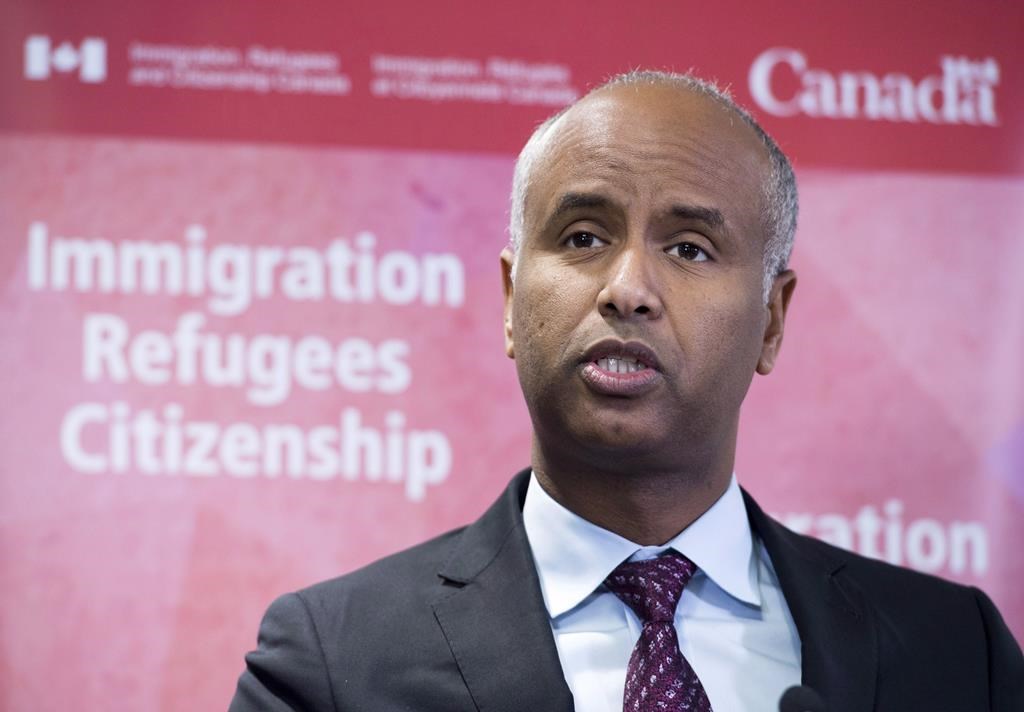A backlog of “legacy” refugee claims filed by applicants who have been waiting over seven years to find out if they can remain in Canada will soon be cleared, as Ottawa now turns its attention to an even bigger backlog of fresh asylum claims.

The old list of stagnating cases one point stood at 32,000 claims and Immigration Minister Ahmed Hussen was eager to shine a spotlight this week on his government’s successful efforts at cutting it to almost nothing.
The people whose cases have been on that list came to Canada seeking refugee protection prior to December 2012. That’s when the Conservatives, then in power, established new 60-day deadlines for refugee hearings. That left the 32,000 cases already in the system to be bumped to lower priority for scheduled hearings because they were already late.
Thanks to the efforts of a special task force struck to deal specifically with legacy cases, only a handful remain. The one per cent that are left have been suspended, have already had hearings and are awaiting decisions or are scheduled to be heard between now and July.
WATCH: Canadian refugee backlog strands Syrian family

“The legacy cases consist of people who have been in the backlog for many, many years and they were simply waiting to get a hearing so they can have finality in their cases and stop their lives being held in limbo,” Hussen said in an interview Monday. “I’m really happy about the fact we’ve kept our promise to eliminate that backlog.”
The task force worked closely with the legal community and other stakeholders to schedule and hear legacy claims as quickly and efficiently as possible, Hussen added.
But even as immigration officials celebrate the elimination of this backlog, another even larger inventory of refugee claims looms at the Immigration and Refugee Board (IRB), where asylum-seekers go to have their claims heard by an arms-length tribunal.
Departmental plans for the 2019-20 fiscal year published just last week show the board has been “experiencing significant pressure as intake continues to substantially exceed funded capacity.”
“The past 24 months have seen the highest volumes of refugee protection claims in the IRB’s history,” the departmental plan document states. “As a result, an inventory of more than 75,000 claims has accumulated, representing more than two years of work at the current funding levels.”
In the 2017-18 fiscal year, the number of new claims began exceeding the board’s capacity to process them by an average of about 2,300 cases a month. This new backlog was created in part by an influx of over 41,000 “irregular” migrants who have crossed into Canada since 2017 by avoiding official border checkpoints. Canada has also seen a rise in the number of refugees entering the country through regular, legal channels.
Hussen says the government is responding to this increased pressure, pointing to new investments contained in this year’s federal budget that promise $208 million in new money for the IRB to tackle refugee claims. This money go toward hiring 130 new staff, including 85 new decision-makers.
Spending of $74 million over two years contained in last year’s federal budget helped the IRB to finalize its highest number of cases ever, Hussen said.
This year, even more money is to get the IRB to the point where it can process 50,000 claims per year.
WATCH: Solution to asylum seekers starts far from Canadian borders

“The capacity has increased,” Hussen said. “You have in the IRB now a system that is actually funded for the volumes that Canada is actually experiencing, which is similar to volumes that other Western countries are experiencing around the world because there is just an increase in global migration patterns.”
The government also plans to expand a pilot project that streamlines a previous process that saw refugee judges reviewing three files for each asylum case: an RCMP file, a file from the Canada Border Services Agency and a file from the Immigration Department. The new system combines all these into one decision-ready file, which reduces a major administrative burden on asylum judges, Hussen said.
“This will dramatically cut the processing time and efficiencies.”
The Immigration Department projects wait-times for asylum seekers awaiting a refugee hearing will be cut almost in half, from the current two years to 13 months. And for those who go through the streamlined file-management system, wait times could be as low as four months, Hussen said.



Comments